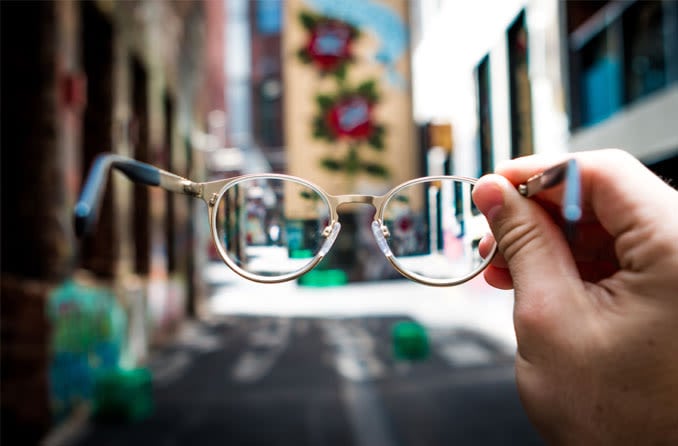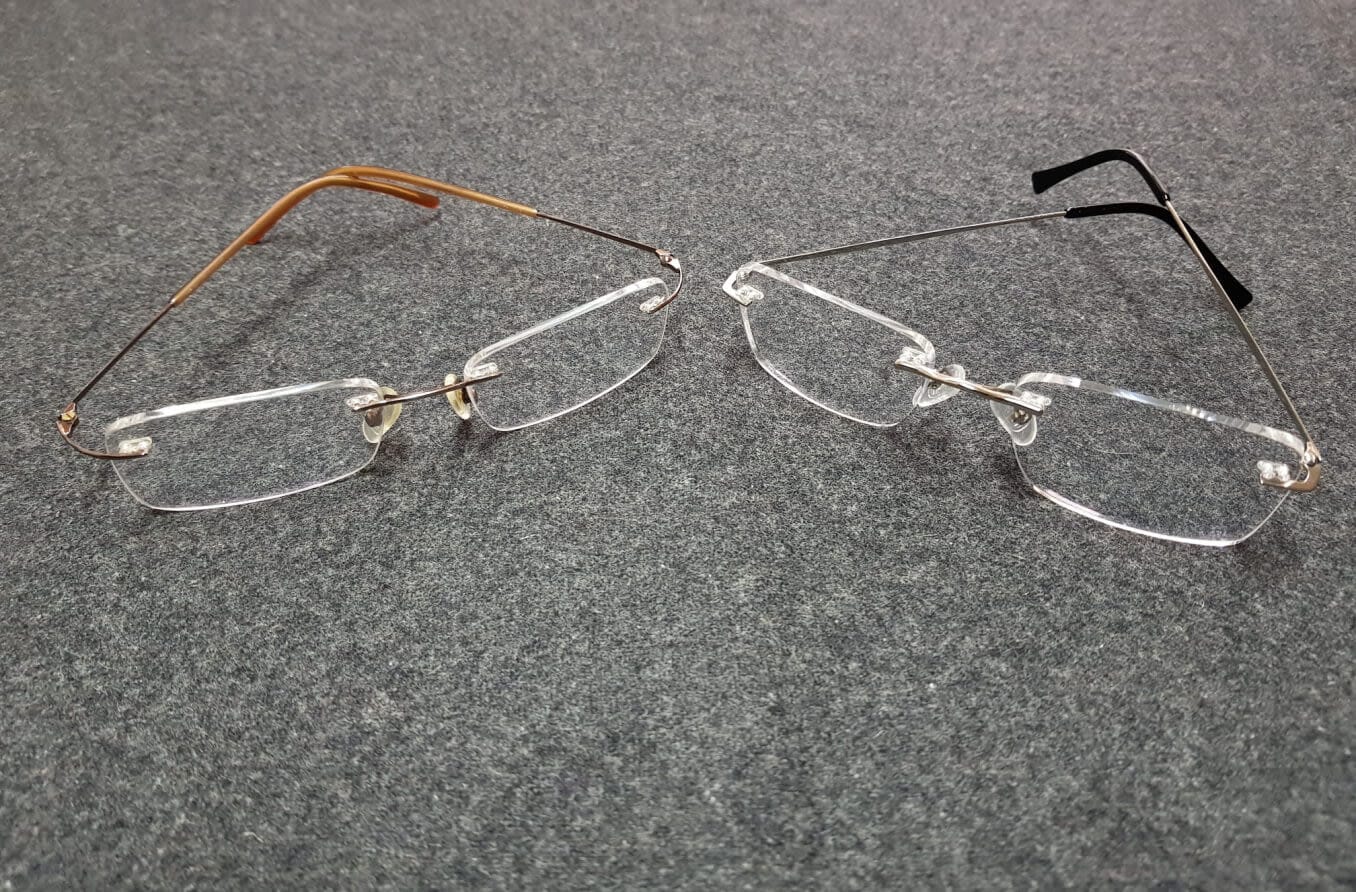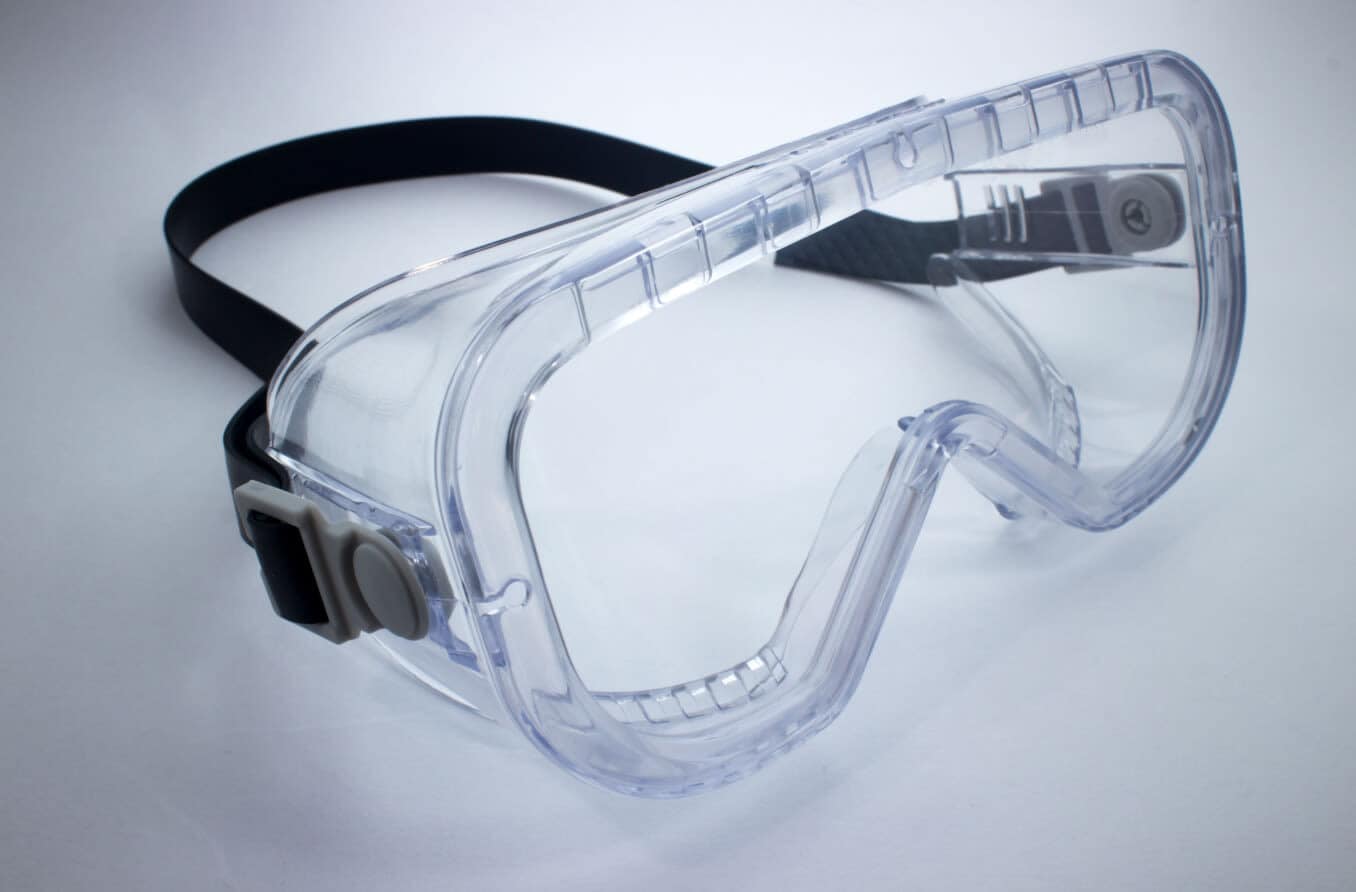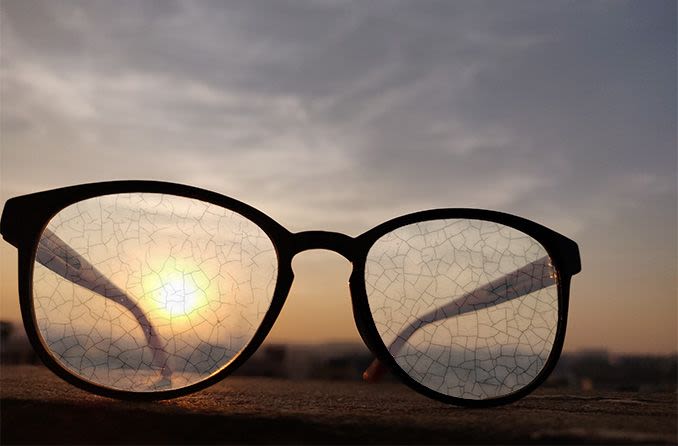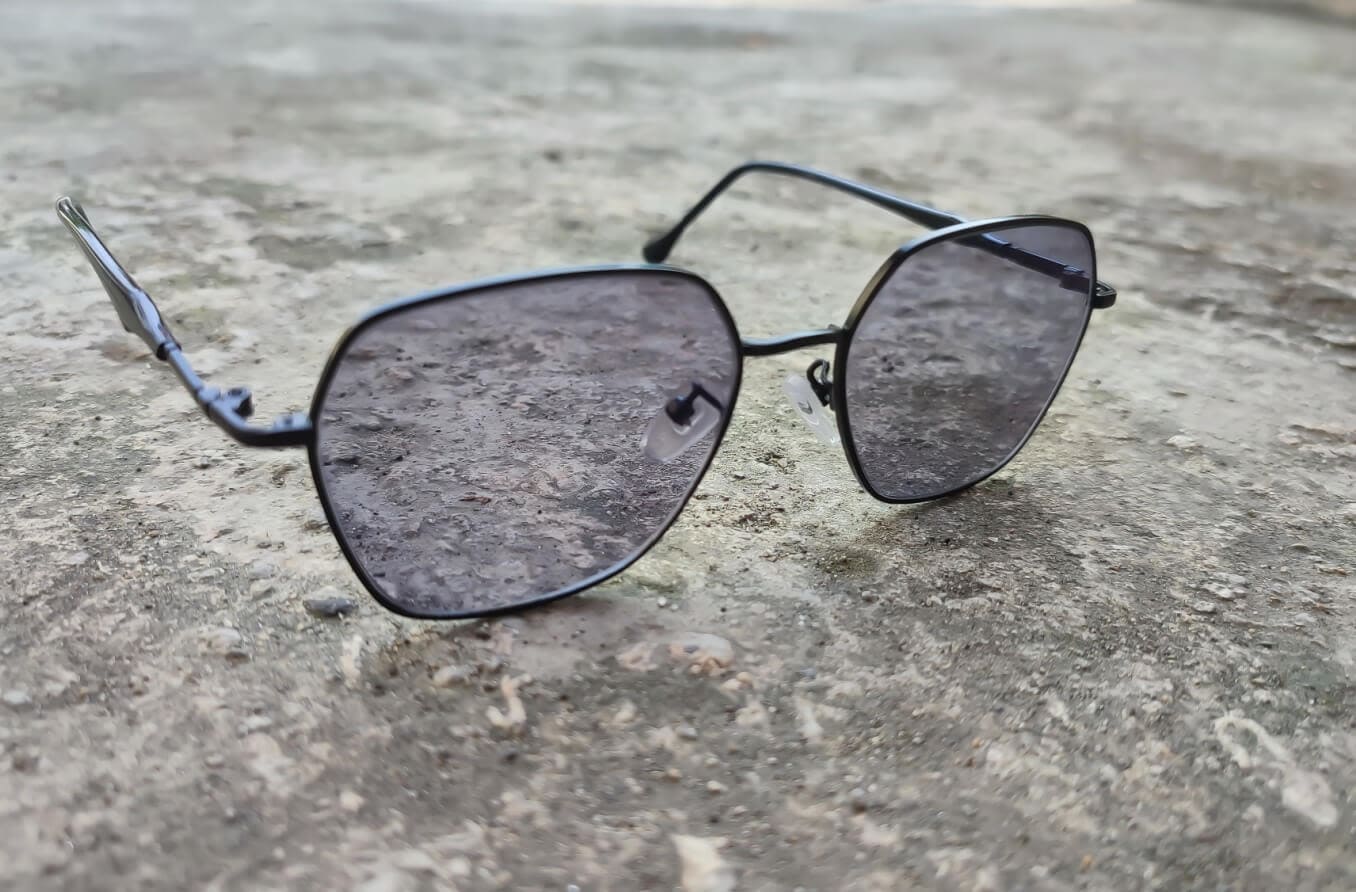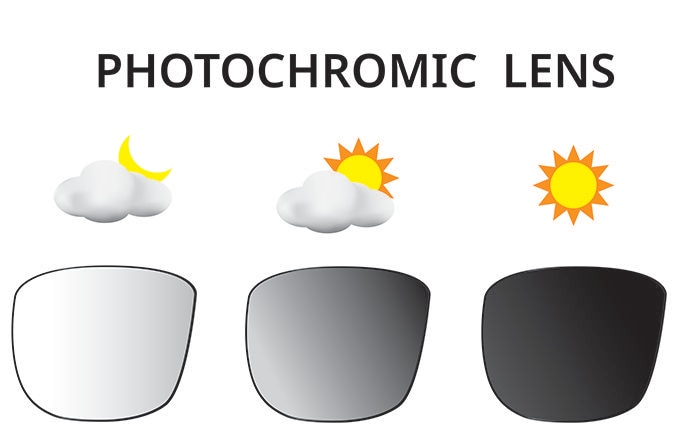In life, there usually are tradeoffs. High heels will never be as comfortable as sneakers, and the most powerful computers will probably never be the smallest.
But when it comes to eyeglass lenses, you no longer have to compromise. Trivex lenses, which rival polycarbonate lenses as the safest lenses on the market, are made of an exceptionally clear, lightweight lens material, which translates into excellent all-day wearing comfort. So you can experience superior eye protection, sharp vision and lightweight comfort — all in the same lenses.
Trivex lenses, developed in the United States by PPG Industries, are available in a wide variety of lens designs and features, including progressive lenses and photochromic lenses.
For the best comfort, vision and appearance, it's a good idea to have anti-reflective coating applied to Trivex lenses. This microscopic coating eliminates light reflecting from the front and back surfaces of the lenses, giving the lenses a crystal-clear appearance.
Besides being called Trivex, the lens material is marketed under several alternative brand names by lens manufacturers, including NXT (Essilor), Phoenix (Hoya) and Trilogy (Younger Optics).
Developed for Lightweight Protection
It's always smart to choose a lens based on its strength and safety profile — particularly for protective eyewear for kids, sports eyeglasses and sunglasses. Trivex lenses excel in this regard.
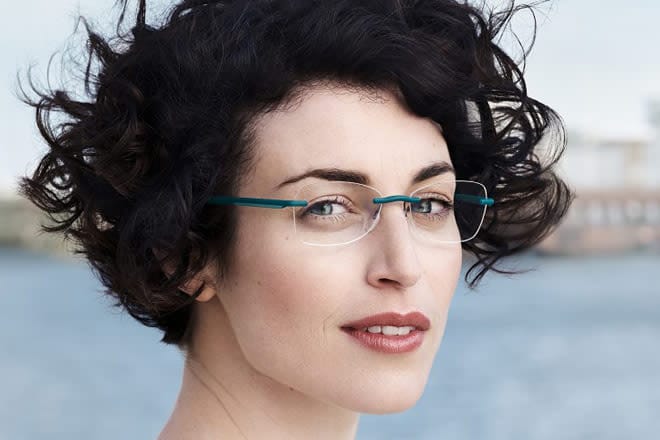
Trivex lenses are lightweight and resist cracking, making them a great choice for rimless frames. This one is by Silhouette International.
Trivex lens material was originally developed for use by the military in helicopter windshields and fighter jet canopies. Then, in 2002, PPG Industries tailored the chemistry of the material specifically for use in optical lenses, making Trivex one of the most lightweight, impact-resistant eyeglass lens materials available.
In fact, only polycarbonate lenses rival the protection and lightweight comfort of Trivex lenses.
Trivex lenses exceed the FDA minimum impact standard for street/dress eyewear by a factor of 60 times and also provide 100 percent protection from the sun's harmful UV rays.
How Trivex Differs from Polycarbonate
For years, polycarbonate lenses have been the industry standard for safety glasses and children's eyewear. But many eye care practitioners now offer Trivex lenses as an alternative to polycarbonate (or "poly") lenses.
Trivex and polycarbonate lenses have a lot in common when it comes to being exceptionally lightweight and impact-resistant — properties that make both lenses equally suited for safety glasses, sports glasses and other protective eyewear.
But they differ in how they are manufactured and other properties. Trivex lenses are cast molded, while polycarbonate lenses are injection molded. The cast molding process mimics how most other plastic and high-index plastic lenses are made: a liquid monomer is poured into molds and hardened in heated ovens. Injection molding is much quicker: solid polycarbonate pellets are superheated, then the resulting liquid is injected into pressurizing molds and quickly cooled.
The slower cast molding process used to create Trivex lenses results in sharper optics than injection molding, according to PPG Industries.
Also, Trivex lenses have a higher Abbe value than polycarbonate lenses. This is a measure of how likely white light is dispersed into its component colors as it passes through a lens material — an optical imperfection known as chromatic aberration.
Lens materials with a high Abbe value tend to cause less chromatic aberration than those with low Abbe values. Trivex lenses have an Abbe value of 45 (better than average among eyeglass lens materials); polycarbonate lenses have an Abbe value of 30 (lowest among all lens materials).
Under certain conditions (and especially with high prescription powers), lenses with a low Abbe value might cause the wearer to notice a colored halo or "fringe" around lights or to experience slightly blurred or distorted peripheral vision.

Many eye care professionals recommend Trivex and/or polycarbonate as the best lens materials for children's eyeglasses, sunglasses and sports protective eyewear.
Trivex lenses also have a higher tensile strength than polycarbonate lenses. This is significant when it comes to mounting lenses in minimalist-design rimless frames, where small holes are drilled in the lenses to attach them to the frame. Because of their superior tensile strength, Trivex lenses are less likely to crack at this connecting point than lenses made of polycarbonate or other lens materials.
On the other hand, polycarbonate lenses have a higher index of refraction than Trivex lenses (1.58 vs. 1.53). Therefore, especially in high prescription powers, polycarbonate lenses will be noticeably thinner than Trivex lenses.
Still, Trivex lenses are thinner than regular plastic eyeglass lenses, which have a refractive index of 1.50. (By comparison, the thinnest high-index plastic lenses available in the U.S. have an index of refraction of 1.74.)
The Comfort of a Lightweight Lens
In addition to having excellent impact resistance, optical properties and tensile strength, Trivex lenses are exceptionally lightweight. In fact, the Trivex lens material has the lightest specific gravity (density per unit volume) of any lightweight material used for eyeglass lenses today.
This makes eyeglasses with Trivex lenses exceptionally comfortable to wear and reduces the risk of your glasses sliding down the bridge of your nose.
What Do You Give Up With Trivex?
While there may be no tradeoffs in terms of quality, strength, safety, comfort or appearance, there may be one thing you'll give up when selecting Trivex eyeglass lenses — some extra dough.
Trivex lenses tend to cost more than polycarbonate or standard plastic lenses. But if you want what many eye care professionals consider to be the best combination of safety, comfort, appearance and optical performance for most eyeglass prescriptions, the Trivex price tag may be an investment worth making.


